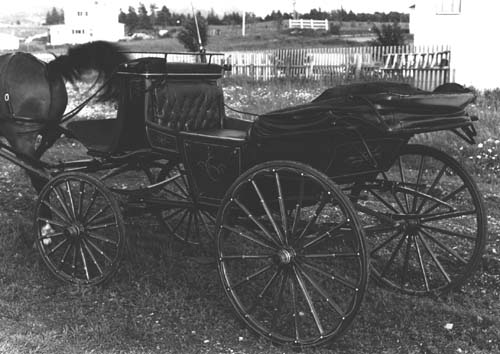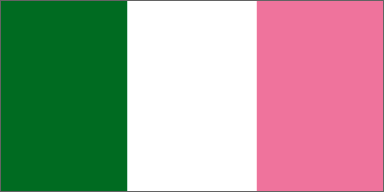"Let the contest be governed by tradition."
This is the motto of the Royal St. John's Regatta, and it is the phrase by which this day of the races lives by.
With 185 years of history behind it, the Royal St. John's Regatta is steeped in traditions. Some have fallen into disuse and obscurity over the years, but others are as strong today as they were decades ago.
A very important Regatta tradition is the patronage of the Governor and now the Lieutenant Governor. The Regatta has been under the patronage of the Governor / Lieutenant Governor almost since the beginning. The Governor lent his name to those events which he felt were worthy of or needed his support. As the first Regatta was to celebrate the Anniversary of the Coronation of the King, it was only natural that they would approach the Governor, the Queen's representative, and ask for his blessing.
|
The Victoria Carriage
One of the more well known traditions is that of the "horse and buggy", or more precisely, The Victoria Carriage. During the early years of the races, the President of the Regatta Committee would rent a horse, buggy and driver for the day of the races. It was used to transport the President to the Lake and then stayed so judges could follow the races from the Boulevard and ensure a manner of fair play existed between the crews. The judge would also be able to report on the turning of the buoys, ensuring that all crews turned properly. |

The Victoria Carriage, restored for 1981 photo
(Year: 1981, Size: 36kB, Photographer: Gerry Boland)
|
While the purpose of the horse and carriage is no longer the same, it is still present. It can be seen moving along the Boulevard today as it was in years gone by, but now it is purely an ornamental sight to be used for the entertainment of dignitaries. In any case, the tradition is still alive. The original Victoria Carriage is no longer used, but is still in the possession of the Regatta Committee.
Noonday Gun
During the mid-1800's, a local Irish soldier by the name of James Brewin played a vital role in the running of the Regatta. He was responsible for firing the gun that signaled the start and finish of a race. From the 1860's to the 1880's he maintained the gun, firing it promptly to start and finish the races. The last year the that gun was used was in 1885, when it was retired to Signal Hill to be used as the noon-day gun. A shot gun was then used to start and finish the races.
 Scale model of the starting cannon, now known as the noonday gun, from the Regatta Museum. (Size: 37kB)
|
The noonday gun still played a vital role in the years that followed.
It was fired at 8:00 AM to let people know if the races were going
ahead by being fired after the decision to go ahead was made. If the winds were
right, the resounding boom could be heard for miles and people knew
to make their way to Quidi Vidi Lake. In modern times, however, the
noon-day gun has been replaced by a much simpler means of communicating
the start of the races - radio. Though the gun is no longer used, it still
remains a part of Regatta history and tradition.
|
A common sight during the Regatta is a ribbon and rosette made of silk, worn by Committee members. The silk ribbon is more properly referred to as the Silk Programme. There is a photo of a Silk Programme in the Regatta Museum dating back to the 1880's. It has the programme of races on it and is used by Committee members to keep track of the race schedule as well as to identify them as members. It is attached with the rosette, which is really only a decoration. It is usually pink, white and green, in honour of the old Native Flag. But, in the past, it has also been red, white and blue for the Union Jack.
Members in the know will always wear it upside down so they can more easily read it.
Native Flag
|
Regatta traditions also branch out into the more obscure. One of those
being the flying of the "Native Flag" over the boathouse on the day
of the Regatta. A popular flag in Newfoundland for much of the
19th century and well into the 20th was the
"Pink, White and Green", sometimes known as the "Native Flag". It
originated in St. John's in 1846.
|

The Native Flag
|
(continued on Page 2)





